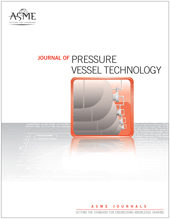
JOURNAL OF PRESSURE VESSEL TECHNOLOGY-TRANSACTIONS OF THE ASME
Scope & Guideline
Fostering Collaboration for a Safer Engineering Future
Introduction
Aims and Scopes
- Pressure Vessel Design and Analysis:
Research emphasizing the design methodologies, stress analysis, and failure mechanisms of pressure vessels, including innovative materials and geometries. - Piping Systems and Components:
Studies focusing on the integrity, reliability, and performance of piping systems under various loading conditions, including thermal and mechanical stresses. - Material Behavior and Properties:
Investigations into the mechanical properties, fatigue behavior, and corrosion resistance of materials used in pressure vessels and piping, often under extreme conditions. - Computational and Experimental Methods:
Utilization of advanced numerical methods, finite element analysis, and experimental techniques to evaluate the performance and safety of pressure vessel and piping systems. - Safety and Risk Assessment:
Research dedicated to risk analysis, safety evaluations, and the development of codes and standards relevant to pressure vessels and piping systems.
Trending and Emerging
- Advanced Computational Techniques:
An increase in the use of machine learning and artificial intelligence for predictive modeling and analysis of pressure vessels and piping systems. - Multiphysics and Multiscale Modeling:
A growing trend towards integrating various physical phenomena in simulations to better understand the behavior of materials and structures under complex conditions. - Sustainability and Environmental Considerations:
Research focusing on the sustainability of materials and the environmental impacts of pressure vessel technology, particularly in the context of renewable energy applications. - Additive Manufacturing Applications:
Emerging studies on the application of additive manufacturing techniques for creating pressure vessels and components, highlighting innovations in design and materials. - Dynamic and Seismic Analysis:
An increased emphasis on dynamic response and seismic resilience of pressure vessels and piping systems, reflecting the need for safety in high-risk environments.
Declining or Waning
- Traditional Welding Techniques:
Research on classical welding methods has decreased, possibly due to the emergence of newer technologies and materials that offer better performance and efficiency. - Static Analysis of Structures:
There is a waning interest in purely static analysis approaches, as the field increasingly emphasizes dynamic and complex loading conditions. - Conventional Fatigue Testing Methods:
The prevalence of studies focusing on traditional fatigue testing methods is declining as new methodologies, such as machine learning and probabilistic approaches, gain traction. - Basic Material Characterization:
Basic studies on material characterization are less frequent, likely overshadowed by more complex investigations into multi-physics interactions and advanced materials. - Simple Risk Assessment Models:
The use of straightforward risk assessment models is decreasing, with a shift towards more comprehensive, data-driven approaches that incorporate machine learning and AI.
Similar Journals

Journal of Theoretical and Applied Mechanics
Pioneering Research in the Mechanics of TomorrowJournal of Theoretical and Applied Mechanics, published by the Polish Society of Theoretical and Applied Mechanics, stands as a leading platform for disseminating cutting-edge research in the realms of theoretical and applied mechanics. With its ISSN 1429-2955 and E-ISSN 1429-2955, this Open Access journal has been fostering academic dialogue since 2006, making knowledge readily accessible to researchers and practitioners alike. Based in Warsaw, Poland, the journal encompasses a wide breadth of topics within mechanics, appealing to a diverse readership including researchers, professionals, and students. The journal's current Scopus ranking places it within the 30th percentile of the field, emphasizing its relevance and contribution to the discipline. As it converges from 2007 to 2024, the Journal of Theoretical and Applied Mechanics is pivotal for those seeking to advance understanding and innovation in mechanical engineering and mathematics, making it an essential resource for anyone involved in these critical areas of study.
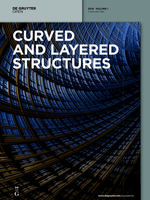
Curved and Layered Structures
Elevating Research in Curved and Layered InnovationsCurved and Layered Structures, published by DE GRUYTER POLAND SP Z O O, is a distinguished open-access journal that has been an essential platform since 2014 for academics and professionals in the fields of Aerospace Engineering, Architecture, Building and Construction, Civil and Structural Engineering, and Computational Mechanics. With an ISSN of 2353-7396, it is recognized for its impactful contributions, reflected in its impressive category quartiles, particularly Q1 in Architecture and notable rankings in various engineering disciplines. The journal's scope encompasses innovative research focusing on the intricate designs and applications of curved and layered structures, making it pivotal for advancing knowledge in these areas. The open-access format ensures widespread dissemination of research findings, promoting accessibility and collaboration among researchers and practitioners worldwide. As it navigates its converged years from 2014 to 2024, Curved and Layered Structures continues to attract high-quality submissions that push the boundaries of engineering and architectural design.
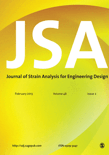
JOURNAL OF STRAIN ANALYSIS FOR ENGINEERING DESIGN
Advancing the Frontiers of Engineering Design through Strain Analysis.The Journal of Strain Analysis for Engineering Design, published by SAGE Publications Ltd, is a prestigious academic journal that has been at the forefront of *engineering and applied mathematics* research since its inception in 1965. With a focus on the intricate analysis of strain in engineering design, this journal serves as a vital resource for researchers and professionals seeking to push the boundaries of understanding in mechanics and materials engineering. As of 2023, it enjoys a respectable ranking in its respective fields, including Q2 in *Mechanical Engineering* and *Mechanics of Materials*, and Q3 in *Applied Mathematics* and *Modeling and Simulation*, reflecting its significant contribution to the academic community and relevance in practical applications. Although it is not an open-access journal, its rigorous peer-review process ensures the dissemination of high-quality research. The journal provides a platform for innovative ideas and methodologies, fostering advancements in engineering design and analysis vital for both academia and industry. By bridging theoretical foundations with real-world applications, the Journal of Strain Analysis for Engineering Design remains an essential publication for those dedicated to addressing the complexities of modern engineering challenges.

Forces in Mechanics
Pioneering Insights into Force DynamicsForces in Mechanics is a premier open access journal published by ELSEVIER that has carved out a significant niche in the realms of Mechanical Engineering and Mechanics of Materials. Established in 2020 and based in the Netherlands, this journal aims to disseminate high-quality research that explores the fundamental principles and applications of forces within mechanical systems. It operates under the ISSN 2666-3597, showcasing a dedication to transparent and accessible research for scholars around the globe. With a 2023 impact factor ranking placing it in the Q2 quartile for both Mechanical Engineering and Mechanics of Materials, the journal is recognized for its contributions to the field, evidenced by its Scopus ranking—285th in Mechanical Engineering and 184th in Mechanics of Materials, placing it in the 57th and 53rd percentiles, respectively. The journal publishes original research articles, reviews, and technical notes, catering to a diverse audience including researchers, practitioners, and students who are keen to advance their knowledge on the dynamics of forces in mechanical contexts. As it converges from 2021 to 2024, Forces in Mechanics remains committed to providing a platform for innovative research and critical discourse, ensuring that all published work is freely available to the global community.
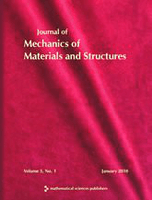
Journal of Mechanics of Materials and Structures
Bridging Theory and Application in Material Sciences.Journal of Mechanics of Materials and Structures, published by Mathematical Science Publishers, is a distinguished periodical in the field of Applied Mathematics and Mechanics of Materials. With the ISSN 1559-3959, this journal has been a pivotal platform since its inception in 2006, providing insights and advancements in the mechanics of materials and their structural applications. Operating out of the University of California, Berkeley, this journal not only boasts a respectable standing within its categories, ranking Q4 in Applied Mathematics and Q3 in Mechanics of Materials as of 2023, but it also serves a crucial role in fostering academic discourse among researchers, practitioners, and students alike. Although it does not currently offer open access, its contributions to the respective fields are invaluable, underscoring the relevance and importance of continued research in understanding material behavior and structural integrity. Whether investigating theoretical frameworks or engineering applications, the Journal of Mechanics of Materials and Structures remains an essential resource for anyone dedicated to the advancement of the science of materials and structures.

Journal of Computational Applied Mechanics
Bridging Theory and Practice in Mechanical EngineeringJournal of Computational Applied Mechanics, published by UNIV TEHRAN, DANISHGAH-I TIHRAN, is an influential open-access journal that has been disseminating significant research findings since its inception in 2012. With a dedicated focus on the fields of Computational Mechanics, Mechanical Engineering, and Mechanics of Materials, this journal has garnered a Q3 ranking in multiple relevant categories as of 2023, indicating its burgeoning impact within the academic community. Although precise HIndex scores are currently unavailable, the journal's recognition is underscored by its Scopus rankings, placing it in the middle tier among its peers. The journal invites researchers, professionals, and students to contribute to and engage with the continually evolving discourse in applied mechanics, fostering innovation through the dissemination of quality research. As an open-access journal, it ensures that findings are readily accessible to a global audience, thereby enhancing collaboration and knowledge sharing in the scientific community.
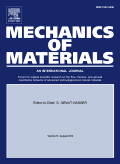
MECHANICS OF MATERIALS
Pioneering Research in Mechanics of MaterialsMECHANICS OF MATERIALS, published by ELSEVIER, is a premier international journal serving the dynamic fields of Materials Science and Mechanics. With an esteemed reputation reflected in its 2023 Quartile rankings—Q1 in Instrumentation, Q1 in Materials Science (miscellaneous), and Q1 in Mechanics of Materials—this journal offers a vital platform for the dissemination of cutting-edge research from 1982 to the present. Operating from its headquarters in Amsterdam, Netherlands, the journal boasts impressive Scopus ranks, including 22nd in Physics and Astronomy (Instrumentation) and 67th in Engineering (Mechanics of Materials), placing it firmly within the top echelons of academic publishing. Though not an open-access journal, its rigorous peer-reviewed content ensures high-quality contributions aimed at advancing knowledge and application in mechanics and materials. Researchers, professionals, and students are encouraged to engage with the latest studies and findings that underpin innovations in material properties, testing methodologies, and engineering applications, reinforcing the journal’s critical role in shaping the future of the discipline.
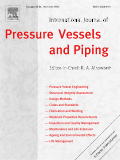
INTERNATIONAL JOURNAL OF PRESSURE VESSELS AND PIPING
Unveiling breakthroughs in mechanics of materials.International Journal of Pressure Vessels and Piping, published by Elsevier Science Ltd, stands as a premier platform in the fields of Materials Science, Mechanical Engineering, and Mechanics of Materials. With a rich history spanning from 1973 to 2024, this journal has consistently ranked in the Q2 category of its respective fields, affirming its relevance and contribution to ongoing research and innovation. As evidenced by its solid positioning in Scopus rankings, including a notable 74th percentile rank in Mechanical Engineering, it is a valued resource for professionals, researchers, and students seeking to expand their knowledge on topics related to pressure vessels and piping systems. While the journal does not currently offer Open Access, its comprehensive articles and peer-reviewed research continue to make a significant impact, ensuring that readers stay informed of the latest advancements and methodologies in the industry. Available in both print and online formats, the International Journal of Pressure Vessels and Piping is your go-to source for authoritative insights and cutting-edge studies in the engineering domain.

Materials Physics and Mechanics
Elevating Knowledge in Materials Science and EngineeringMaterials Physics and Mechanics is a pivotal journal dedicated to advancing the fields of condensed matter physics, materials science, mechanical engineering, and the mechanics of materials. Published by the Institute of Problems in Mechanical Engineering, Russian Academy of Sciences, this journal has established itself as a valuable resource since its inception, particularly from 2003 to 2004 and now continuously from 2009 to 2024. Although it currently holds a Q4 categorization in various disciplines, its contributions are critical to understanding and developing new materials and their applications in engineering. The journal provides insightful articles that explore the nuances of material properties, their behaviors under different conditions, and the physical principles governing these phenomena. Though it operates under a traditional publication model, the insights provided within its pages are invaluable to researchers, professionals, and students striving to push the boundaries of knowledge in the materials domain. Its ISSN numbers (1605-2730, E-ISSN 1605-8119) serve as a gateway to a wealth of scientific knowledge emanating from the Russian Federation, contributing to the global discourse in materials physics and mechanics.
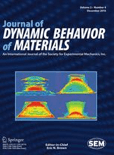
Journal of Dynamic Behavior of Materials
Connecting Scholars to the Future of Material DynamicsThe Journal of Dynamic Behavior of Materials, published by SpringerNature, serves as a premier platform for the dissemination of innovative research in the fields of materials science and mechanics of materials. With its ISSN 2199-7446 and E-ISSN 2199-7454, this international journal has established itself since its inception in 2015, showcasing groundbreaking insights into the dynamic properties and behaviors of various materials. Operating from Switzerland and headquartered in London, this journal embraces an open-access philosophy, albeit not entirely, to enhance research visibility. According to the Scopus rankings, it is positioned in the Q3 quartile for both materials science and mechanics of materials, indicating its growing prominence in the academic landscape. Researchers and professionals alike benefit from its wide-ranging contributions that address contemporary challenges and advancements, making it a critical resource for advancing knowledge and innovation in these crucial fields.